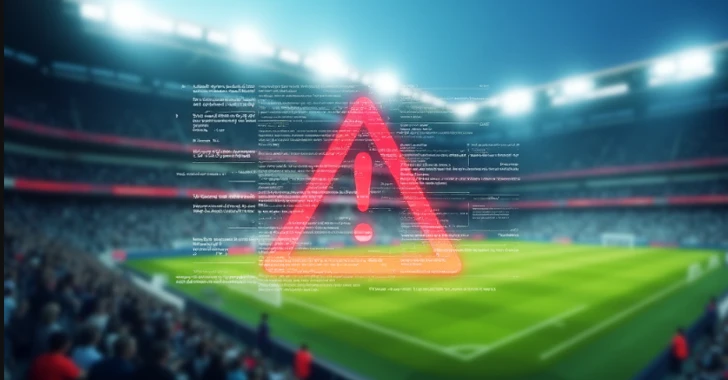Sep 23, 2024
sysbraykr.com news - Threat hunting is no longer a luxury reserved for large enterprises with deep cybersecurity resources. In today’s landscape, proactive threat hunting is critical for organizations of all sizes to stay ahead of adversaries. While traditional security approaches rely heavily on reactive defenses, threat hunting is about actively seeking out potential threats before they can do damage. Advanced threat hunting techniques go beyond the basic indicators of compromise (IoCs) and dive deep into understanding the attacker’s behaviors, tactics, techniques, and procedures (TTPs).
In this two-part series, we will explore cutting-edge methodologies in proactive threat hunting, focusing on anomaly detection, behavioral analytics, and leveraging threat intelligence platforms (TIPs). Part 1 will cover anomaly detection and behavioral analytics, while Part 2 will focus on integrating threat intelligence platforms for effective hunting.
The Evolution of Threat Hunting
The concept of threat hunting has evolved from simple log analysis and signature-based detections to more advanced methods that involve complex data analysis, machine learning, and leveraging both internal and external threat intelligence.
Traditional security mechanisms like firewalls, intrusion detection systems (IDS), and antivirus solutions rely on known signatures and patterns to detect threats. However, modern attackers employ tactics specifically designed to evade signature-based defenses. Advanced threat hunting techniques are built on the premise that attackers will eventually bypass these defenses, and hunters must instead focus on detecting abnormal behavior within the network and endpoints.
Key Concepts in Threat Hunting:
Hypothesis-Driven: Threat hunters often start with a hypothesis based on intelligence or knowledge of the environment. For example, “An attacker could be using living-off-the-land techniques to avoid detection.”
TTP-Focused: Instead of looking for specific IoCs, advanced hunters focus on the tactics, techniques, and procedures (TTPs) of attackers, which are harder to alter or mask.
Proactive and Iterative: Threat hunting is not a one-time exercise; it requires regular, proactive searches for hidden threats and constant refinement of techniques.
Anomaly Detection: Finding the Needle in the Haystack
Anomaly detection is a core technique in threat hunting, aimed at identifying deviations from the normal behavior of systems, users, or network traffic. Attackers often generate unusual activity patterns that can be detected with the right tools and analytics.
1. User and Entity Behavior Analytics (UEBA)
User and Entity Behavior Analytics (UEBA) is a powerful method for identifying anomalies by analyzing the baseline behavior of users and entities (such as hosts or applications) over time. UEBA systems leverage machine learning models to monitor normal behavior, such as login patterns, file access, or network usage, and then detect deviations that may indicate malicious activity.
Key UEBA Use Cases for Threat Hunting:
Insider Threat Detection: UEBA can detect when an internal user behaves unusually. For example, an employee accessing sensitive files at odd hours or logging in from an unexpected location could be a red flag for malicious activity or compromised credentials.
Compromised Account Detection: By tracking a user’s normal patterns of system interaction, UEBA can identify when an account behaves out of character. For instance, if an account that normally interacts with a specific set of applications suddenly initiates unusual connections to other internal systems, it might be compromised.
Lateral Movement: UEBA systems can detect lateral movement by identifying when a user or entity starts interacting with parts of the network or resources that they don’t typically access.
Example: Detecting Malicious Insider Activity
An employee who usually works regular hours suddenly logs into the company’s financial system late at night and attempts to access sensitive payroll data. A UEBA solution could flag this behavior as anomalous, triggering an alert for further investigation. This proactive detection could reveal an insider trying to steal sensitive information.
2. Network Anomaly Detection
Network anomaly detection focuses on identifying unusual traffic patterns that may indicate compromise or malicious activity. While traditional IDS systems focus on signature-based detection, anomaly-based network monitoring uses machine learning to build profiles of what “normal” network traffic looks like, and flags deviations from this baseline.
Examples of Network Anomalies for Threat Hunting:
Unusual Data Transfers: Anomalous outbound traffic volume from internal systems to external IP addresses could indicate data exfiltration.
Odd Protocol Usage: Attackers sometimes use uncommon or proprietary protocols to evade detection. Network anomaly detection systems can flag unusual protocol usage, such as an internal machine suddenly communicating via IRC or FTP.
Beaconing Behavior: Advanced attackers often set up long-term command and control (C2) communication channels using periodic beaconing. While this activity can be subtle, an anomaly detection system that monitors outbound traffic patterns could detect regular beacon intervals to the same external IP address.
Example: C2 Detection Through Beaconing Anomalies
A compromised endpoint communicates with a remote C2 server every 60 minutes. A network anomaly detection system could pick up on the periodic nature of these connections and raise an alert, even though the traffic volume is small and the communication uses encrypted HTTPS. Detecting this anomaly could lead to identifying a persistent foothold established by an APT group.
3. Endpoint Anomaly Detection
Endpoint detection and response (EDR) tools play a crucial role in threat hunting by analyzing endpoint behavior. While traditional endpoint security solutions rely on signatures, anomaly-based EDR systems monitor patterns at the process, file system, and memory levels to detect unusual activities that may signify compromise.
Examples of Endpoint Anomalies:
Unusual Process Execution: For example, if Microsoft Word spawns a PowerShell process, this could be indicative of a macro-based attack, where an attacker embeds malicious scripts within documents.
Abnormal File Access: If a user or application starts accessing critical system files, registry keys, or sensitive data they’ve never touched before, this could be a sign of privilege escalation or lateral movement.
Persistence Mechanisms: Anomalous additions to the Windows startup registry, cron jobs, or scheduled tasks can indicate that attackers are trying to maintain persistence in the system.
Example: Detecting Process Injection via Endpoint Anomaly
An attacker uses a process injection technique to hijack a legitimate system process like explorer.exe and use it to execute malicious payloads. An EDR tool capable of detecting anomalies could flag the behavior when it sees a non-standard process trying to access memory in explorer.exe, triggering an investigation before the attack can escalate.
Behavioral Analytics: A Deeper Dive into Attacker Tactics
Behavioral analytics takes anomaly detection a step further by analyzing patterns of behavior that are indicative of an attacker’s specific tactics. Instead of merely detecting deviations from the norm, behavioral analytics focuses on recognizing sequences of actions that resemble known attack methodologies.
1. MITRE ATT&CK-Based Hunting
The MITRE ATT&CK framework has become an essential tool for understanding attacker behavior. It maps out various TTPs that attackers commonly use in the different stages of an attack lifecycle. Many advanced behavioral analytics tools use MITRE ATT&CK as a foundation for detecting specific patterns of attacker behavior.
Examples of MITRE ATT&CK Techniques for Threat Hunting:
Credential Dumping: Attackers often attempt to dump credentials from systems using techniques like lsass.exe process access or Mimikatz. Behavioral analytics tools can detect sequences that match these techniques.
Persistence via Scheduled Tasks: Creating scheduled tasks to maintain persistence is a common tactic. By recognizing the pattern of creating or modifying scheduled tasks, behavioral analytics tools can catch attempts to establish footholds.
Example: Detecting a Privilege Escalation Attempt
An attacker attempts to escalate privileges by exploiting a vulnerable driver and subsequently dumping credentials from lsass.exe. A behavioral analytics system could recognize this sequence of actions as matching known privilege escalation and credential dumping techniques from the MITRE ATT&CK matrix, triggering an immediate alert.
2. Threat Actor Profiling and Behavioral Signatures
Some advanced behavioral analytics systems go beyond detecting single techniques and look at the overall behavior of the threat actor. By correlating activity across endpoints, networks, and users, these systems can identify behavioral signatures that resemble known APT groups or threat actors.
For example, an actor known for lateral movement followed by data exfiltration might be detected when they repeat the same TTPs across different environments. Behavioral profiling helps identify threats even when traditional IoCs like hashes, IP addresses, or domain names are absent.
Example: APT Group Detection Through Behavioral Signatures
A threat actor known for using spear-phishing to deliver malicious documents, followed by lateral movement using stolen credentials and fileless attacks, repeats this pattern in a new environment. Behavioral analytics tools that monitor TTPs could recognize this sequence and identify the APT group early in the kill chain.
Conclusion: Enhancing Threat Hunting with Anomaly Detection and Behavioral Analytics
Advanced threat hunting is about recognizing that attackers will eventually bypass perimeter defenses, and focusing on the behavioral and anomaly-based clues that indicate an active or potential threat. UEBA, network anomaly detection, and endpoint anomaly detection all provide critical insights into potential threats before they fully manifest. By applying behavioral analytics based on frameworks like MITRE ATT&CK, red teams and security operations centers (SOCs) can proactively hunt for threats, even when traditional IoCs are absent.
source : https://medium.com/purple-team/advanced-threat-hunting-techniques-part-1-7609fe04d7d8





